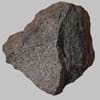Definition
Obsidian is a naturally occurring volcanic glass formed as an extrusive igneous rock. It is produced when felsic lava extruded from a volcano cools rapidly with minimum crystal growth
Lignite is a soft brownish coal which shows traces of plants and is intermediate between bituminous coal and peat
Discoverer
Obsius
Unknown
Etymology
From Latin obsidianus, misprint of Obsianus (lapis) (stone) of Obsius
From French, Latin lignum wood + -ite1
Class
Igneous Rocks
Sedimentary Rocks
Sub-Class
Durable Rock, Medium Hardness Rock
Durable Rock, Soft Rock
Group
Volcanic
Not Applicable
Other Categories
Opaque Rock
Coarse Grained Rock, Fine Grained Rock, Medium Grained Rock, Opaque Rock
Texture
Glassy
Amorphous, Glassy
Color
Black, Blue, Brown, Green, Orange, Red, Tan, Yellow
Black, Brown, Dark Brown, Grey, Light to Dark Grey
Durability
Durable
Durable
Appearance
Shiny
Veined or Pebbled
Interior Uses
Decorative Aggregates, Interior Decoration
Not Yet Used
Exterior Uses
Garden Decoration
Not Yet Used
Other Architectural Uses
Not Yet Used
Not Yet Used
Construction Industry
Arrowheads, Cutting Tool, Knives, Scrapers, Spear Points
for Road Aggregate, Steel Production
Medical Industry
Surgery
Not Yet Used
Antiquity Uses
Artifacts, Jewellery
Not Yet Used
Commercial Uses
Creating Artwork, Mirror, Used in aquariums
Electricity Generation
Types
Fireworks Obsidian, Mahogany, Sheen Obsidian, Snowflake obsidian and Velvet Peacock Obsidian
Xyloid Lignite or Fossil Wood and Compact Lignite or Perfect Lignite
Features
Blocks negativity, Helps to protect against depression
Generally rough to touch, Helps in production of Heat and Electricity, Used as fossil fuel
Archaeological Significance
Monuments
Not Yet Used
Not Yet Used
Famous Monuments
Not Applicable
Not Applicable
Sculpture
Not Yet Used
Not Yet Used
Famous Sculptures
Not Applicable
Not Applicable
Figurines
Not Yet Used
Not Yet Used
Formation
When the lava is released from volcano, it undergoes a very rapid cooling which freezes the mechanisms of crystallization. The result is a volcanic glass with a uniform smooth texture.
Coal formation takes place due to accumulation of plant debris in a swamp environment. The Coal formation process continues, as peat turns into lignite brown or black coal at increasing heat and pressure.
Mineral Content
Not Available
Not Available
Compound Content
Aluminium Oxide, CaO, Iron(III) Oxide, FeO, Potassium Oxide, MgO, MnO, Sodium Oxide, Phosphorus Pentoxide, Silicon Dioxide, Titanium Dioxide
Carbon, Hydrogen, Nitrogen, Oxygen, Sulphur
Types of Metamorphism
Burial Metamorphism, Cataclastic Metamorphism, Contact Metamorphism
Not Applicable
Types of Weathering
Biological Weathering, Chemical Weathering, Mechanical Weathering
Biological Weathering, Chemical Weathering, Mechanical Weathering
Types of Erosion
Chemical Erosion, Coastal Erosion, Glacier Erosion
Chemical Erosion, Water Erosion, Wind Erosion
Grain Size
Not Applicable
Medium to Fine Coarse Grained
Fracture
Conchoidal
Conchoidal
Porosity
Very Less Porous
Highly Porous
Luster
Vitreous
Dull to Vitreous to Submetallic
Compressive Strength
Not Available
Cleavage
Non-Existent
Non-Existent
Toughness
Not Available
Not Available
Specific Gravity
2.6-2.7
1.1-1.4
Transparency
Translucent
Opaque
Density
2.6 g/cm3
800-801 g/cm3
Resistance
Heat Resistant, Impact Resistant
Heat Resistant
Deposits in Eastern Continents
Asia
Afghanistan, Indonesia, Japan, Russia
Bangladesh, Burma, Cambodia, China, India, Indonesia, Kazakhstan, Malaysia, Mongolia, Pakistan, Turkey, Vietnam
Africa
Kenya
Botswana, Kenya, Morocco, Mozambique, South Africa, Tanzania
Europe
Greece, Hungary, Iceland, Italy, Turkey
Belgium, Bulgaria, England, France, Germany, Greece, Hungary, Kosovo, Netherlands, Norway, Poland, Romania, Serbia, Slovakia, Slovenia, The Czech Republic, Ukraine, United Kingdom
Others
Not Yet Found
Not Yet Found
Deposits in Western Continents
North America
Canada, Mexico, USA
Canada, Mexico, USA
South America
Argentina, Chile, Ecuador, Peru
Brazil, Chile, Colombia, Venezuela
Deposits in Oceania Continent
Australia
New Zealand
New South Wales, Queensland, Victoria
All about Obsidian and Lignite Properties
Know all about Obsidian and Lignite properties here. All properties of rocks are important as they define the type of rock and its application. Obsidian belongs to Igneous Rocks while Lignite belongs to Sedimentary Rocks.Texture of Obsidian is Glassy whereas that of Lignite is Amorphous, Glassy. Obsidian appears Shiny and Lignite appears Veined or Pebbled. The luster of Obsidian is vitreous while that of Lignite is dull to vitreous to submetallic. Obsidian is available in black, blue, brown, green, orange, red, tan, yellow colors whereas Lignite is available in black, brown, dark brown, grey, light to dark grey colors. The commercial uses of Obsidian are creating artwork, mirror, used in aquariums and that of Lignite are electricity generation.










